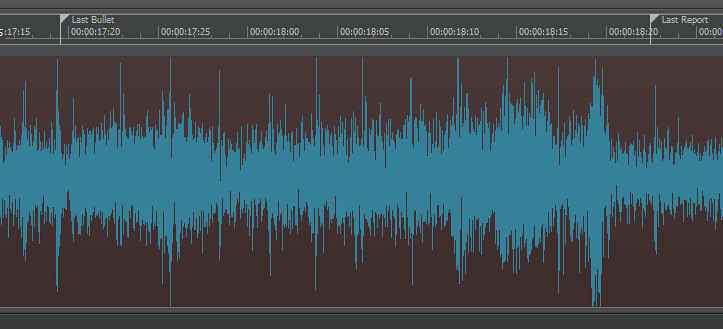United States News
See other United States News Articles
Title: Forensic acoustic proof of SECOND shooter in the Las Vegas massacre
Source:
[None]
URL Source: https://www.youtube.com/watch?v=JxmEFeKy8aI
Published: Oct 11, 2017
Author: Mike Adams TheHealthRanger
Post Date: 2017-10-11 00:40:47 by A K A Stone
Keywords: None
Views: 57109
Comments: 148
Post Comment Private Reply Ignore Thread
Top • Page Up • Full Thread • Page Down • Bottom/Latest
Begin Trace Mode for Comment # 30.
#4. To: A K A Stone, Nolu Chan (#0)
I've listened to the first 20 mins of it, which seems to be a complete presentation of his case. I like that he's knowledgeable, or at least seems to be, in this field. But I think there's a flaw in his analysis, and that is that all the math is based on the premise that the second shooter was firing .223 rounds just as Paddock was. Adams even admits early in the video that the distance & shot report tables is different for different types of rounds. But it's already known that Paddock has 1-2 dozen different firearms in the room. Some were .223, but I think others were of differing calibers. So perhaps Paddock fired .223 rounds some of the time, but also switched to different rifles of higher or lower caliber which would have differing acoustic lag times at the same distance. Has Adams accounted for that possibility? There is also the speculative nature of matching bullet impact sounds with shot report acoustics. I.e you might hear on a recording 6 shot reports but only 5 bullet impacts, in which case determining which bullet impact sounds match which reports could be speculative, and if you get that wrong then you'll be wrong about the distance of the shooter. Paddock switching rifles might also account for the differing shot acoustic recordings from the taxi at the base of tho hotel.
And he doesn't present a single sonogram - which is what the actual experts use to distinguish rifle report from impact sounds. http:// www.btgresearch.org/AcousticReconstruction02042012.pdf And yep - we don't know yet which weapons / ammunition were fired in association with the audio events. Having that knowledge is essential to correctly computing the ballistic data - which include the changes in velocity he's using as "proof". He's presented no "proof".
No, he clearly has not proved anything, and the vid should not have been labeled as such. But he has made an argument that there was a second shooter. Proving or disproving that argument would require more work.
His argument/model is dependent upon: A: Ballistic parameters he pulled out of his wherever Please fill in the params on this balistic calculator with the correct REAL values? http://www.jbmballistics.com/cgi-bin/jbmtraj-5.1.cgi You can't. He can't. All anyone can do presently is guess. B: Data from Audio that he doesn't present as part of documenting his methodology - which for this kind of sound would require a spectogram to differentiate the muzzle blast from the local sonic cracks and/or local impact sound events. http:// www.btgresearch.org/AcousticReconstruction02042012.pdf What he presented on the whiteboard is an example of an amplitude chart like this one I made for audio from a video recorded from the target zone. That's NOT a spectogram.
There are no replies to Comment # 30. End Trace Mode for Comment # 30.
Top • Page Up • Full Thread • Page Down • Bottom/Latest
#21. To: Pinguinite, Aka Stone, Nolu Chan, TooConservative (#4)
(Edited)
There is also the speculative nature of matching bullet impact sounds with shot report acoustics
#25. To: VxH (#21)
He's presented no "proof".
#30. To: Pinguinite (#25)
(Edited)
But he has made an argument that there was a second shooter.

Replies to Comment # 30.
[Home] [Headlines] [Latest Articles] [Latest Comments] [Post] [Mail] [Sign-in] [Setup] [Help] [Register]
